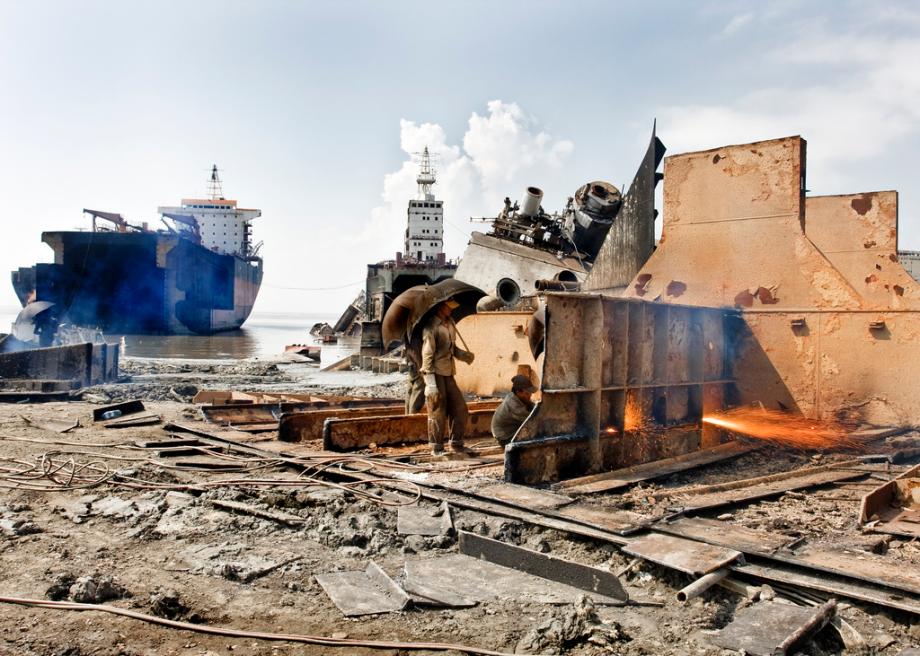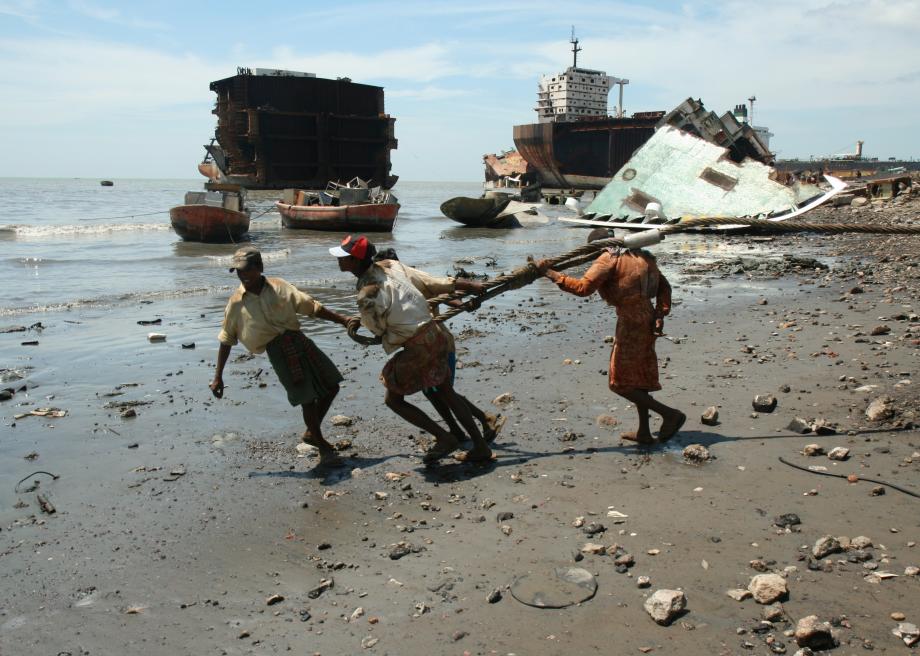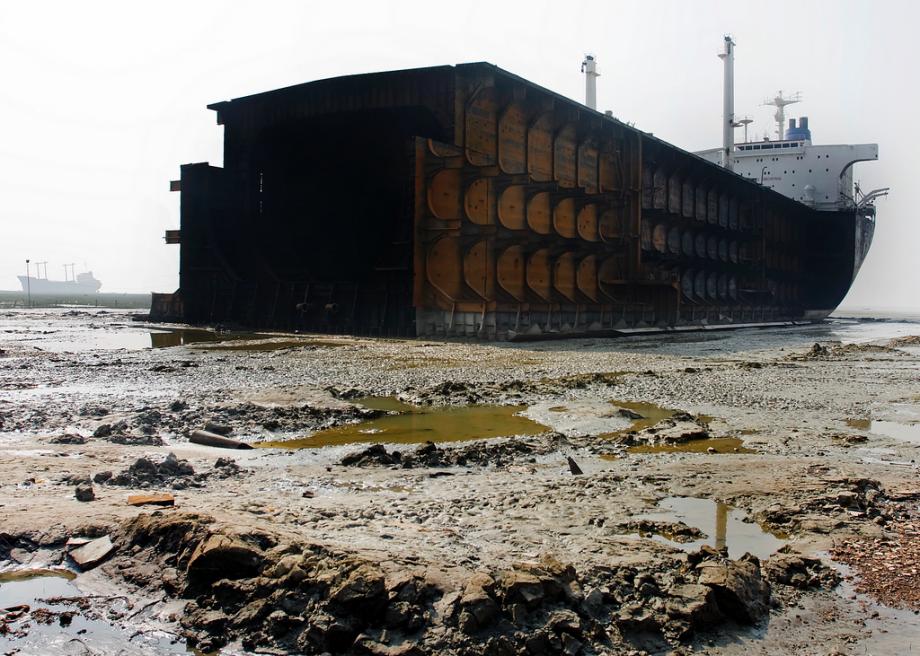Dirty, Dangerous, and Deadly: The Shipbreaking Yards of Bangladesh
Atlas Obscura on Slate is a new travel blog. Like us on Facebook, Tumblr, or follow us on Twitter @atlasobscura.
The beaches of Chittagong are a massive graveyard for decommissioned ships and tankers. After plowing through the ocean for decades, their battered, rusting hulls sit fully exposed on the sand, waiting for workers in t-shirts, shorts, and flip flops to tear them apart.
Chittagong is home to one of the largest ship-breaking yards in the world -- in a single year, 25,000 employees break down 250 ships. Since the 1970s, vessels have been brought here to be deconstructed into steel scrap, cables, generators, nuts, and bolts.
Bangladesh is the port of choice for two reasons: the labor is cheap and the safety standards are poor. Workers, many of whom are children, earn about four dollars a day pulling apart the hulls by hand, often with little to no safety equipment. The workers inhale noxious fumes and are vulnerable to electrocution, falling debris, and explosions fueled by residual oil. Fifteen shipbreakers died in 2012, mainly from falling, getting caught in fires, or being crushed.
Environmental organizations such as Greenpeace have been campaigning to impose stricter environmental and health standards at the Chittagong yards, or shift the work to developed countries where there are higher standards for worker and environmental safety. However, mineral-poor Bangladesh is reliant on the steel it gets from the decommissioned ships -- metal is used in construction materials, girders, and furniture. For the time being, Bangladesh's ship-breaking yards look to be a continuing part of the country’s future.
Out-of-service ships:
View Jahanabad Ship Breakers in a larger map



